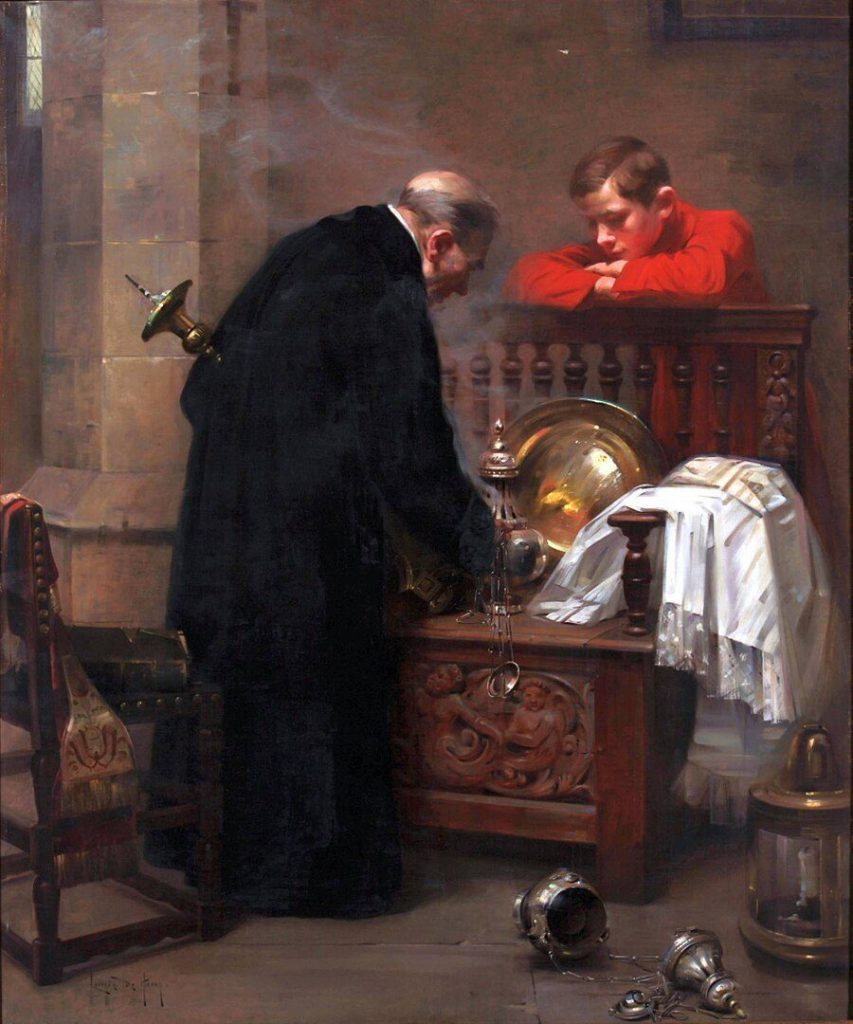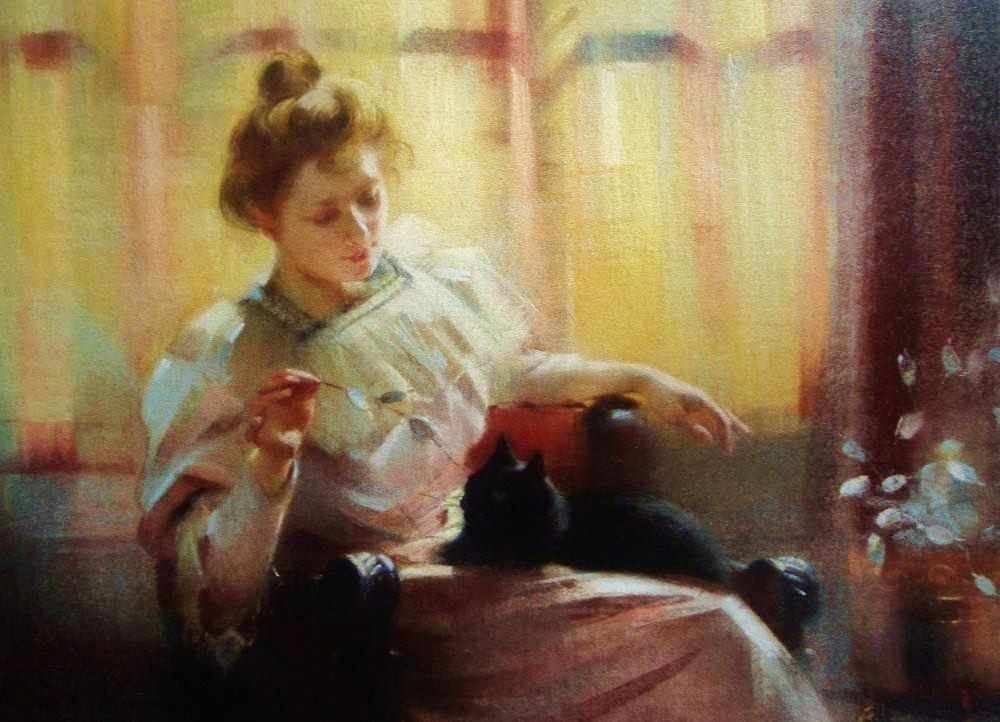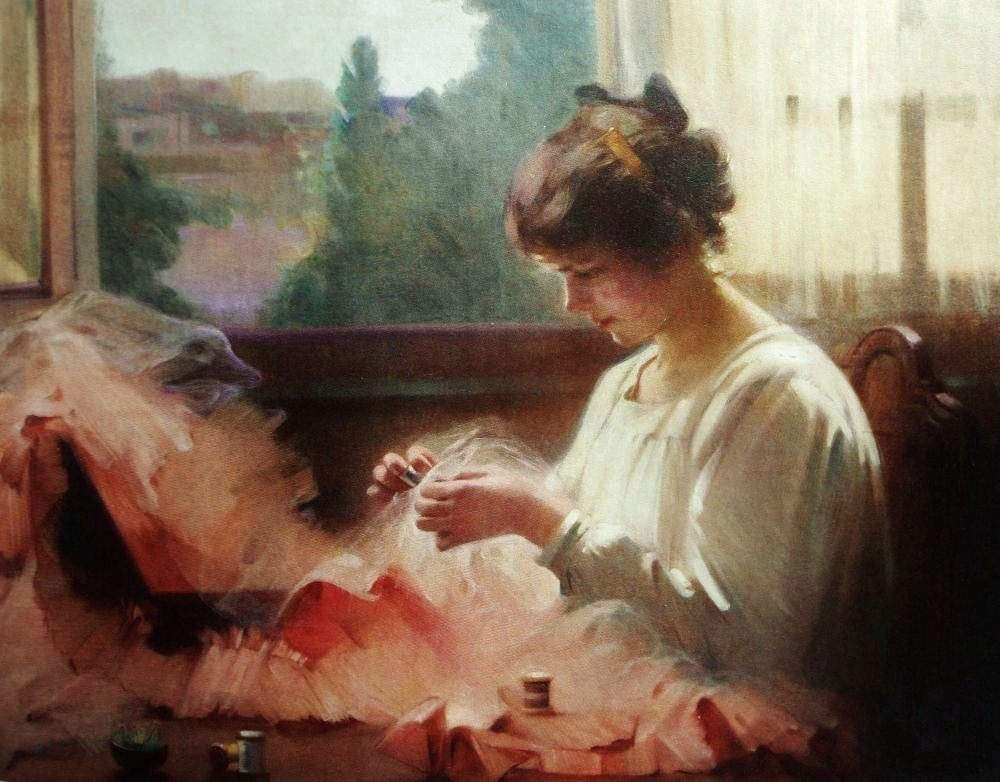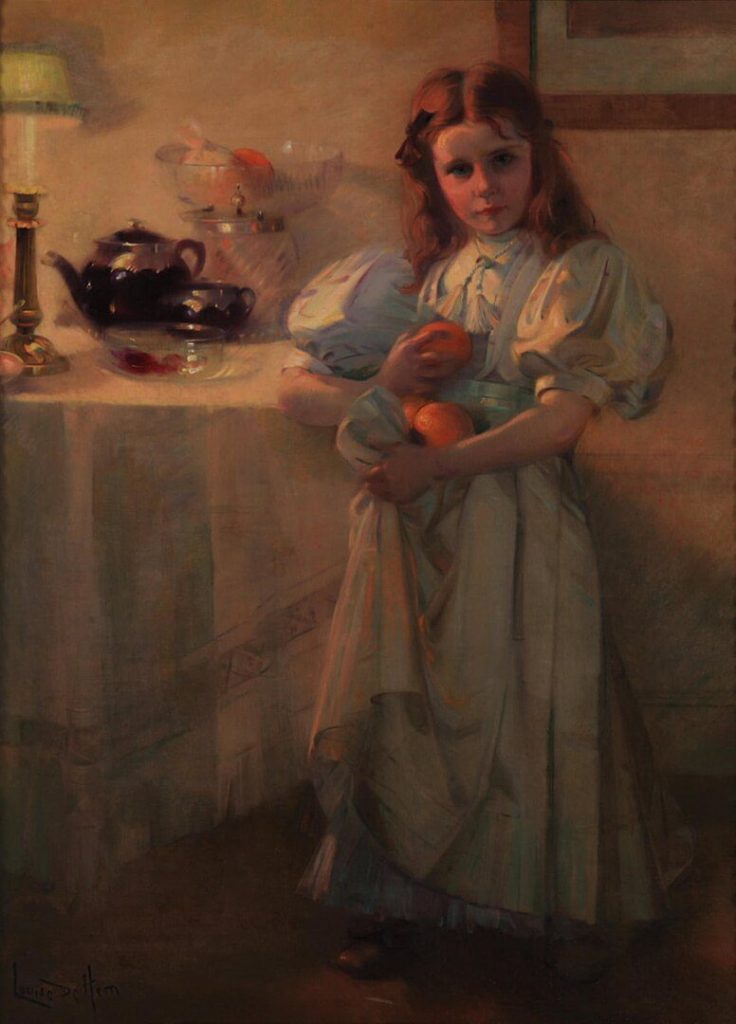
Louise De Hem (1866-1922) was a notable Belgian painter and illustrator, whose work is recognized for its significant contribution to the fin-de-siècle art scene in Belgium. Born in Ypres, her full name was Louise Marie Jeanne Henriette Dehem, but she is commonly referred to by her shortened name, Louise De Hem. Her artistic journey began under the tutelage of her stepfather, Théodore Ceriez, who was an accomplished artist himself. This early exposure to the arts profoundly influenced De Hem, setting her on a path to becoming one of the prominent female artists of her time.

Louise De Hem’s oeuvre is characterized by its versatility, spanning portraits, landscapes, and genre scenes, but she is particularly celebrated for her masterful depiction of the female form. Her portraits are notable for their sensitivity, depth, and the ability to capture the inner life and personality of her subjects. De Hem’s work reflects the influence of her contemporaries and the artistic movements of her time, including Realism and Impressionism, yet she maintained a distinct style that set her apart.

After her initial training with Ceriez, De Hem further honed her skills at the Royal Academy of Fine Arts in Brussels, where she studied under the guidance of renowned artists such as Jean-François Portaels. Her education and talent opened doors to exhibitions at prestigious venues, including the Salon de Paris, where her work received critical acclaim. De Hem’s art was celebrated not only in Belgium but also internationally, earning her a reputation as a significant figure in the European art world of the late 19th and early 20th centuries.

One of the hallmarks of De Hem’s work is her remarkable ability to convey texture and light, particularly in her portrayals of fabrics and interiors. Her paintings often feature richly detailed settings that complement the poise and elegance of her figures, showcasing her meticulous attention to detail and her keen observational skills. This quality made her works highly sought after, particularly by the bourgeoisie and art collectors who appreciated the beauty and refinement of her compositions.

Throughout her career, Louise De Hem faced the challenges of being a woman in a predominantly male-dominated art world. Despite these obstacles, she carved out a successful career and was an inspiration for other female artists of her time and those who followed. Her participation in various feminist art movements and associations underscored her commitment to advocating for the recognition and rights of women in the arts.

De Hem’s legacy is preserved in her contributions to Belgian art history and her influence on subsequent generations of artists. Her paintings are held in several museums and private collections, where they continue to be admired for their beauty, technical skill, and emotional depth. Louise De Hem remains a compelling figure in the study of female artists of the late 19th and early 20th centuries, her work a testament to the enduring power of artistic expression across the boundaries of time and gender.




